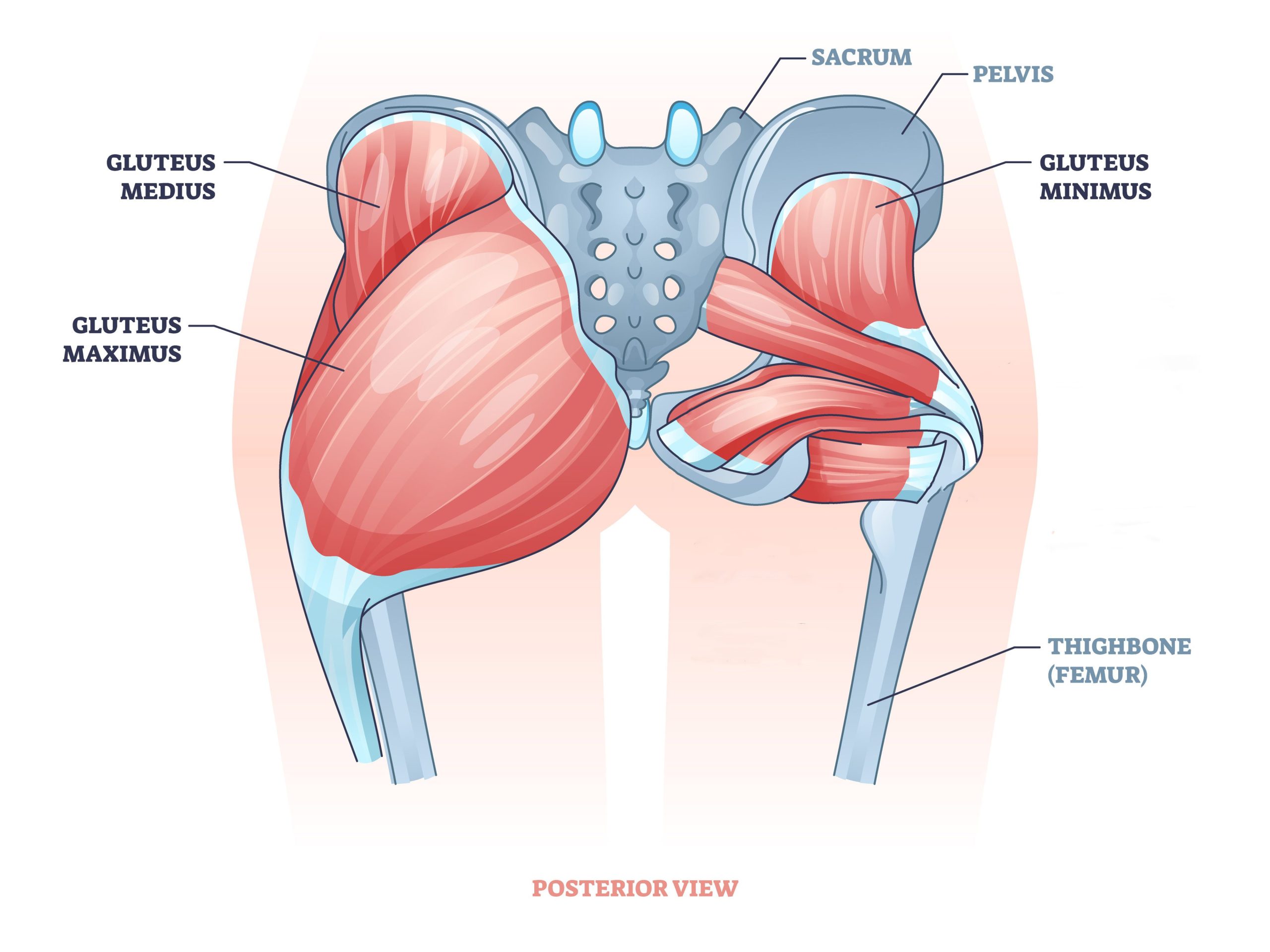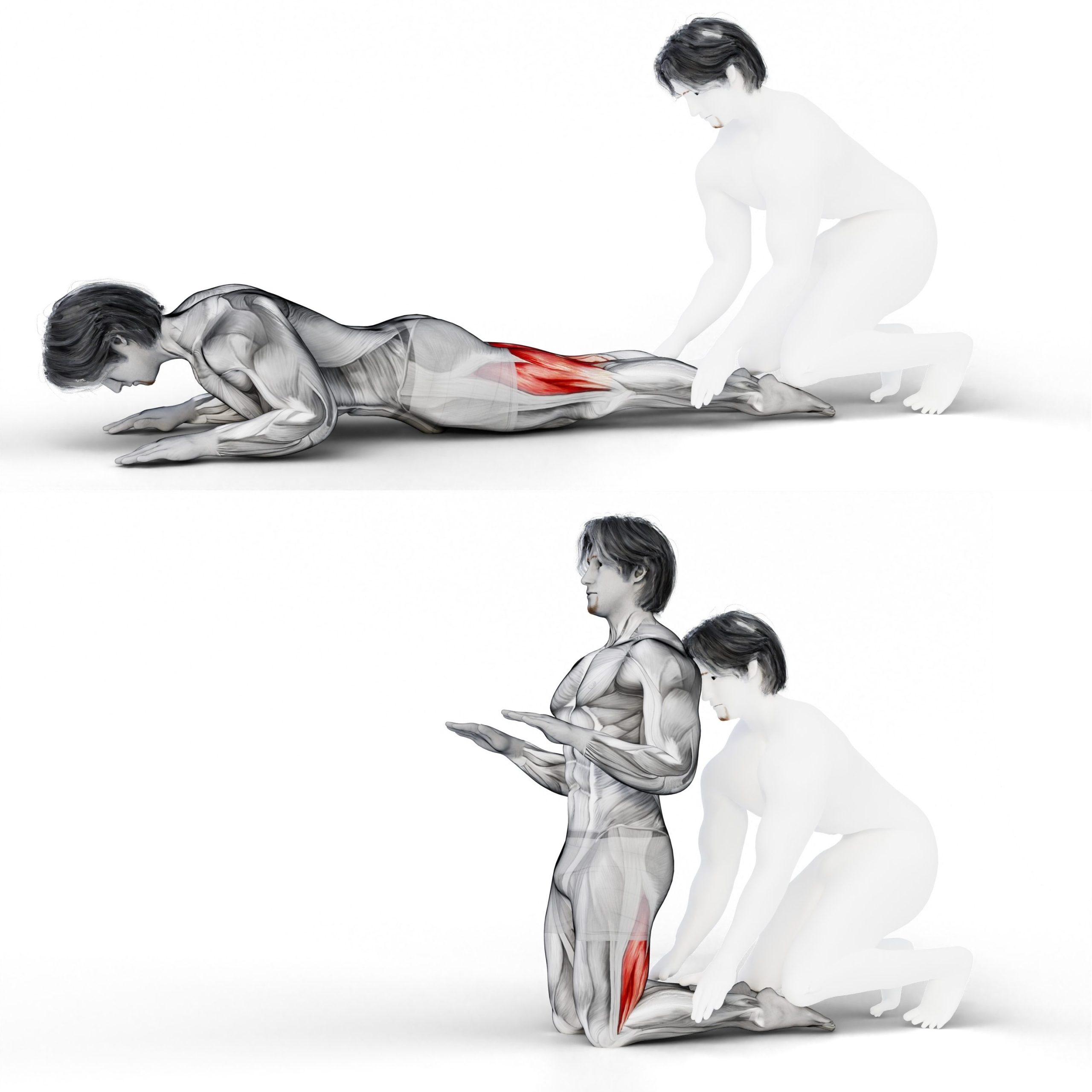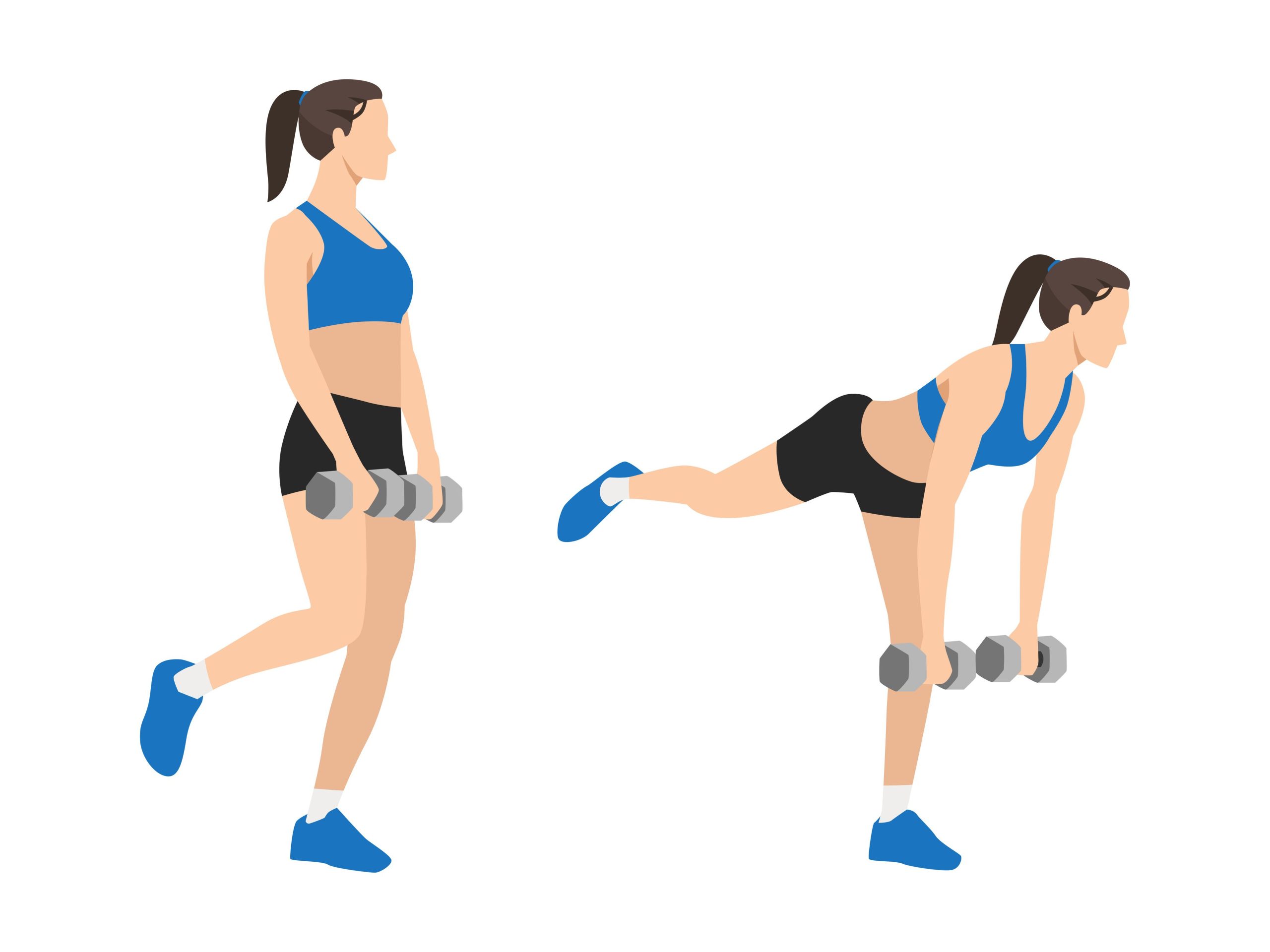Strong glutes and hamstrings provide postural support, enhance hip stability, and contribute to power and performance in activities like running and jumping. Keep reading to learn how to develop big and strong glutes and hamstrings with calisthenics exercises!

Table of Contents
Anatomy and Function of the Hamstrings and Glutes muscles
To train the hamstring and glutes effectively it is important to understand the anatomy and function of the different muscles, that way you will know which exercises works and why.
The hamstrings are a group of three muscles located at the back of the thigh. They play a crucial role in the movement and stability of the hip and knee joints. The three muscles that make up the hamstrings are:

1. Biceps Femoris: The Biceps Femoris is a muscle located in the back of the thigh and is part of the hamstring muscle group. It has two heads: the long head and the short head.
The long head is primarily involved in hip extension and knee flexion (bending and flexing the knee).
The short head is more focused on knee flexion and provides additional stability to the knee joint.
2. Semimembranosus: The Semimembranosus is located on the medial (inner) side of the thigh and is primarily responsible for extending the hip joint (such as in the glute bridge) and knee flexion.
3. Semitendinosus: The Semitendinosus is located between the Biceps Femoris and the Semimembranosus and It is also involved in hip extension and knee flexion.
The glutes, or gluteal muscles, are a group of muscles located in the buttocks area, the “butt muscles”. These are the three muscles that make up the glutes:

1. Gluteus Maximus: The Gluteus Maximus is the largest and most prominent muscle of the gluteal muscle. It is the primary muscle responsible for extending the hip joint and also it also contributes to external rotation of the hip.
2. Gluteus Medius: The Gluteus Medius is located on the outer surface of the pelvis, between the Gluteus Maximus and the Gluteus Minimus. It’s primary functions include hip abduction (lifting the leg away from the midline of the body), medial rotation, and pelvic stability.
3. Gluteus Minimus: The gluteus minimus is the smallest muscle out of the three muscle (hence the name) and is located deep within the buttock region, beneath the larger Gluteus Medius. Similar to the gluteus medius, it is involved in hip abduction, medial rotation, and also contributes to pelvic stability
Top 10 Exercises for training the hamstrings and glutes with calisthenics
Now we have a basic understanding of the functions and anatomy of the hamstrings and glutes, it is time to look at the exercises. The following are the 10 best exercises for training the hamstrings and glutes with calisthenics!
1. Nordic curls
The nordic curls is the go to exercises when it comes to building the hamstring with bodyweight, this exercises can be scaled to suit any level and is therefore the perfect exercises for challenging and growing the hamstrings.

How to perform curls like the nordics:
- Use a sturdy object to hook your feet under. Slowly lean forward at your hips, lowering your upper body towards the ground, by hinging at the hips.
- Once you reach the lowest point you can control, push through your hamstrings and glutes to return to the starting position.
You can use resistance bands, bend at the hip or use partial range of motion to make the movement easier.
2. Glute ham raise
The glute ham raise is quite similar to the nordic curl, but a little bit easier. Therefore if you are a beginner this exercise might be a good to try before doing the nordics or if you just prefer this variation in favour of the nordics that is also fine.

How to build your hams and glutes with the glute ham raise:
- Use a sturdy object to hook your feet under and place a foam roller and pillow (or something similar) under your thighs.
- Use similar form as in the nordics, and avoid bouncing out of the bottom to get the most out of the exercise.
3. Squats
The squat is a stable in most routines and primarily targets the quadriceps, but they also engage the hamstrings and glutes to a significant extent. A recent study that compared the hip trust (the most popular glute exercises) to the squat showed that the squat was actually as effective for developing the glutes.

How to squat:
- Stand with your feet shoulder-width apart or slightly wider. Toes can point slightly outward.
- Keep your chest up, shoulders back, and engage your core for stability.
- Perform squats and aim to lower as low as possible that is comfortable and safe for your flexibility.
Use extra weight if you have the option, or switch to harder progressions such as the pistol squats once you get comfortable with BW squats.
4. Pistol squats
Pistol squats are a highly challenging exercise, if you don’t have access to weights or prefer to train with bodyweight only, this is a good progression from the normal BW squat.

How to squat like a smoking hot pistol:
- Begin by standing on one leg with your foot flat on the ground. Extend the other leg straight out in front of you, keeping it parallel to the ground.
- Start squatting down, and lower your body as far as your flexibility allows while maintaining balance.
- Push through the heel of the supporting leg to stand back up and repeat for reps on both legs.
Pistol squats require practice, and it’s common to struggle with balance and flexibility when starting. Take your time, focus on proper form, and gradually progress as your strength and mobility improve. You can hold onto a stable surface, such as a railing or post, for support during the movement.
5. Single leg deadlift
The single-leg deadlift is a unilateral exercise that targets the hamstrings, glutes, lower back, and stabilizing muscles. It also challenges your balance and flexibility, which is great.

Here is how to deadlift on leg for extra gainz:
- Start on one leg and hinge at your hips, keeping your back straight, while extending the non-supporting leg straight back behind you.
- Reach forward with both hands toward the ground as your raised leg extends backward, forming a straight line with your body.
- Aim to lower your torso until it’s parallel to the ground or as far as your flexibility allows, maintaining a neutral spine.
- Engage your hamstrings and glutes to pull your torso back up to the starting position. Stand tall on the supporting leg and squeeze your glutes at the top.
Hold something heavy (such as a water bottle or backpack) in the hand opposite to the supporting leg (or both) for added resistance.
6. Single-leg sliding hamstring curl
The single-leg sliding hamstring curl is an effective exercise that targets the hamstrings, glutes, and core. It involves sliding one foot along a surface while flexing and extending the knee (which are one of the primary functions of the hamstrings).

Here’s how to perform the single-leg sliding hamstring curl for big hammies:
- Begin by lying on your back with your legs extended. Place a towel or slider under one foot or place your feet in a gymnastic ring, keeping the other foot flat on the ground.
- Slide the foot on the towel away from your body by bending the knee. Keep the hips lifted throughout the movement.
- Once you reach the end position start sliding the foot back towards your body.
- Perform the desired number of repetitions on one leg before switching to the other.
Focus on controlling the movement, during the sliding phase.
7. Glute bridge
The glute bridge is a simple yet effective exercise that targets the glutes, hamstrings, and lower back. It’s a great way to activate and strengthen the muscles in the posterior chain. There a serval variation you can do if the normal glute bridge is a piece of cake for you.

Here’s how to perform glute bridges:
- Lie on your back on a mat with your knees bent and feet flat on the ground.
- Press through your heels, engaging your glutes, and lift your hips toward the ceiling.
- Squeeze your glutes at the top of the bridge to fully engage the muscles in your buttocks and hold the bridge position for a moment, maintaining the contraction in your glutes.
- Lower your hips back down to the starting position in a controlled manner.
If you’re looking to make the glute bridge more challenging, here are some harder variations that target the glutes, hamstrings, and core even more:
Single-Leg Glute Bridge: Lift one foot off the ground, extending the leg straight while performing the bridge with the other leg.
Elevated Single-Leg Glute Bridge: Perform a single-leg glute bridge with your foot elevated on a step or bench. This increases the range of motion and adds difficulty.
Weighted Single-Leg Glute Bridge: Place a weight or resistance band across your hips while performing the single-leg glute bridge.
8. Lunges
Lunges are a compound lower body exercise that primarily targets the muscles in the thighs, hips, and buttocks. Whether you’re a beginner or an advanced trainee, lunges can be a valuable addition to your workout routine for developing lower body strength, stability, and flexibility.

Here’s a guide on how to do forward lunges properly!
- Take a step forward with one foot, ensuring that your stride is long enough to create two 90-degree angles at both knees when you lower your body.
- Lower your body by bending both knees. Your front knee should be directly above your ankle, and your back knee should hover just above or lightly touch the ground.
- Push off the front foot to return to the starting position. Bring your front foot back to meet the other foot.
Keep your torso upright, and engage your core to maintain stability. Your back should remain straight, and your chest should be lifted.
9. Bulgarian split squats
Bulgarian split squats are a highly effective unilateral lower body exercise that targets the quadriceps, hamstrings, glutes, and stabilizing muscles. Incorporate them into your lower body workout routine to enhance unilateral strength, stability, and overall lower body development.

How to perform split squats like a Bulgarian:
- Stand facing away from a bench, step, or any elevated surface. Place one foot behind you on the elevated surface, ensuring your toes are pointing down. Take a step forward with the other foot, creating a stance where your front knee is directly above your ankle.
- Lower your body by bending the front knee, allowing the back knee to lower toward the ground.
- Aim to lower your back knee close to the ground while maintaining an upright torso and keeping your front knee in line with your toes.
- Push through the heel of the front foot to return to the starting position.
Ensure proper alignment of the front knee and ankle and maintain an upright torso throughout the movement.
Sumo squats
Sumo squats, also known as plie squats, are a variation of the traditional squat that involves a wider stance and a turned-out position of the feet, resembling the stance of a sumo wrestler. You work more glutes, hamstrings, abductors, and adductors with sumo squats, since the movement are more hip-dominant.

How to squat like a sumo wrestler:
- Stand with your feet wider than shoulder-width apart, and point your feet outward at about a 45-degree angle.
- Start squatting down, and ensure that your knees track in line with your toes, avoiding inward collapse.
- Push through your heels and engage your inner thighs, quads, and glutes to return to the starting position.
Focus on pushing your hips back and maintaining an upright torso to engage the lower body effectively.
Final thoughts
Don’t be afraid to use weights if you have the option, most of the exercises mentioned can be loaded with external load, hip trust and various machines are some other good weighted options for building the glutes and hamstrings.
If you are interested in a full comprehensive calisthenics leg workout check out this post.
References
- Hip thrust and back squat training elicit similar gluteus muscle hypertrophy and transfer similarly to the deadlift Daniel L. Plotkin, Merlina A. Rodas, Andrew D. Vigotsky, Mason C. McIntosh, Emma Breeze, Rachel Ubrik, Cole Robitzsch, Anthony Agyin-Birikorang, Madison L. Mattingly, J. Max Michel, Nicholas J. Kontos, Andrew D. Frugé, Christopher M. Wilburn, Wendi H. Weimar, Adil Bashir, Ronald J. Beyers, Menno Henselmans, Bret M. Contreras, Michael D. Roberts bioRxiv 2023.06.21.545949; doi: https://doi.org/10.1101/2023.06.21.545949
Related posts:
Free Calisthenics Programs💪
Anton has been training calisthenics for many years and has experience coaching calisthenics. As a calisthenics nerd, I enjoy diving deep into various topics related to calisthenics.



1